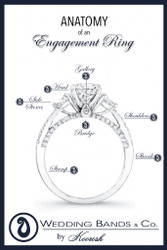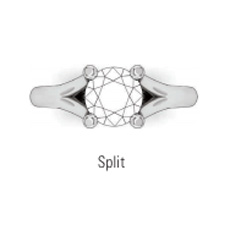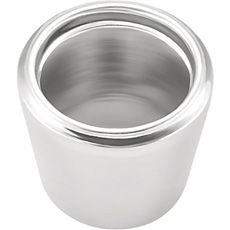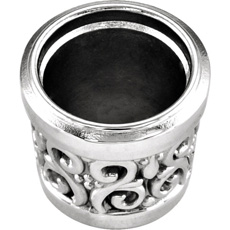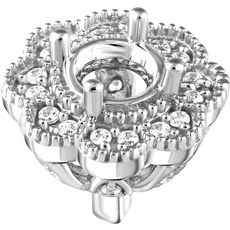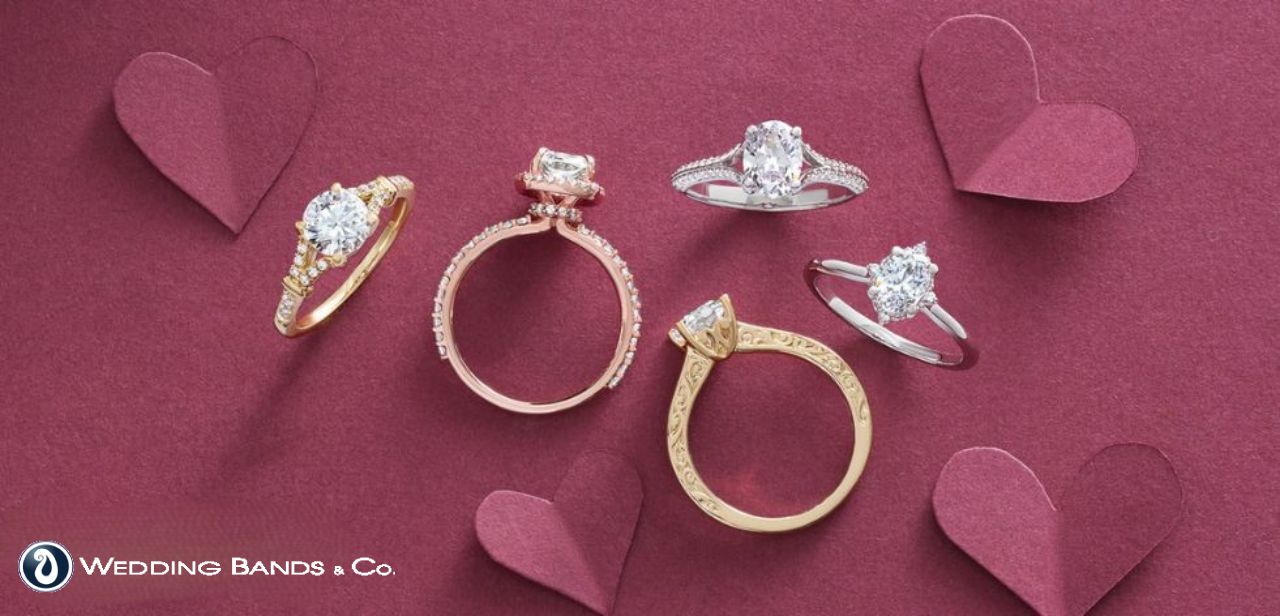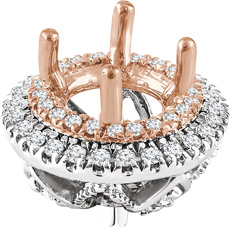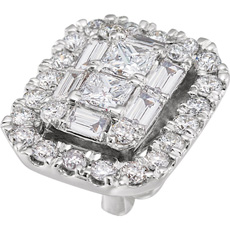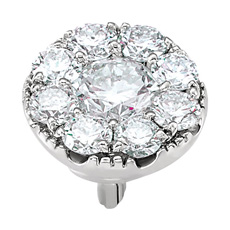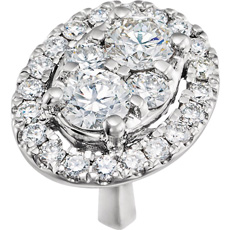The Anatomy of Rings
Posted by Koorosh Daneshgar on Jan 11th 2018
What are the parts of a ring?
For this blog post, we will be discussing the anatomy of rings. We will work our way up from the base of the ring. We will discuss different variations and terms used for different components of a ring.
1.The shank (Also referred to as: The band)
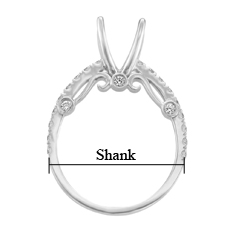
The shank refers to the band of a ring: the part of the ring that wraps around your finger. The shank is also comprised of different parts of a ring that will be discussed later (side stones, shoulders and bridge) and has several different styles regarding shape and design:
European shank (Also referred to as: luxury shank or Euro-shank) :
The European shank differs from traditional shanks because it is squared on the bottom instead of being round.
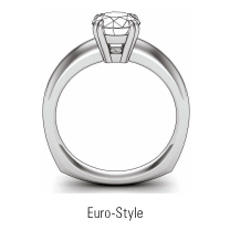
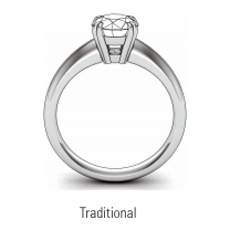
The European shank offers a few different added benefits. Due to the increased weight of the ring at the base, it does help prevent the ring from incessant spinning around the finger. Also, because of the thickness of the metal at the base, it takes longer for the base of the ring to thin out and risk cracking or breaking.
Top-of-shank shapes
Straight

Straight is the simplest and most classic shank shape that maintains a uniform thickness all the way around, or most of the way around, the ring.
Bypass
Bypass is a popular modern style that features the top parts of the band going on either side of the center stone in different directions to avoid intersecting. This can come in a variety of shapes, however, as long as the two parts of the band bypass the center stone and do not intersect, the design is considered bypass.
Tapered
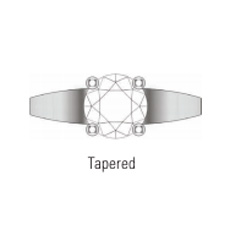
Tapered is a design that features a consistent and gradual widening of the band at the top of the shank toward the center stone.
Reverse Tapered
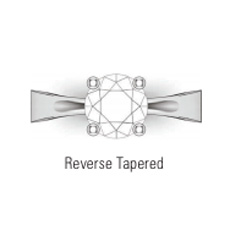
Reverse tapered is exactly what it sounds like. Instead of a consistent and gradual widening of the band toward the center stone, the top of the shank narrows toward the center stone.
Flair
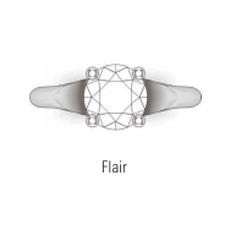
Flair is similar in design to tapered, except the widening toward the top of the shank is not gradual and instead curves outward.
Pinched
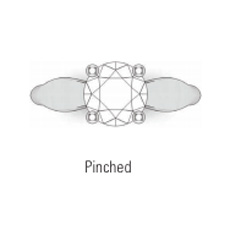
Pinched flares out like a flair style, however, comes back in and narrows closer toward the center stone looking like the metal was pinched inward.
Split
Split has a broad definition and can include any ring with a shape that is flared, pinched, tapered, or reverse tapered as long as the shank splits into two (or more) distinct separate parts. A subcategory of the split-shank category is the twisted, crossover or braided shank which sees two or more shanks twisting over reach other.
Freeform
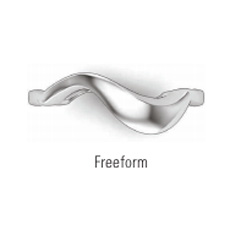
Freeform is a very broadly defined style. It is a style that is only defined as a design lacking a conventional shape or structural pattern.
Shank Profiles
The shank profile is what the shape of the shank would be when viewing a cross section of the shank. Some shank styles can only be achieved on certain shapes and designs of ring, or rings of a certain thickness.
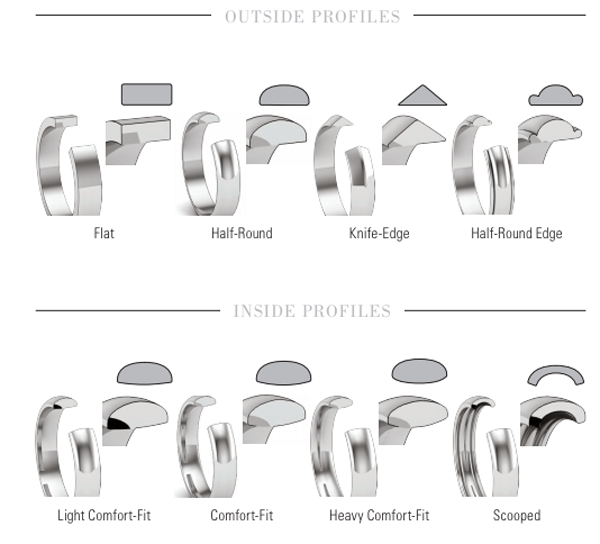
The selection listed above are the most frequently seen styles. However, different shapes are being designed every day. Any outside profiles can conceivably be combined with any inside profile designs. The term comfort-fit is attributed to rings with a rounded inside profile, making the ring more comfortable to wear. However, most rings cannot have comfort-fit interior unless the ring is wider.
2.The Stamp (Also referred to as: engraving or hallmark)
All rings sold in the United States are required, by law, to be stamped with their metal content (this stamp is known as a hallmark in British jewelry culture). This means that any ring you are likely to come across like likely going to have at least one stamp in it. Stamping got its name from the traditional practice of using a stamp and a hammer to put the markings on the inside of the ring. While this is still practiced, it is done so in ever decreasing numbers; jewelers instead opting for the use of engravers to put this or any other markings on the inside of a ring (hence the secondary term: engraving). Other things that can be found engraved on the inside of rings are designers’ names or insignias, diamond specifications, or even personal messages engraved in the ring at the behest of the owner of the ring.
3.Side stones (Also referred to as: accent stones)
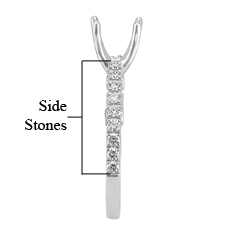
Side stones refer to any diamonds aside from the center stone. They get their name from their placements on the sides of the center stone and are used as accent on the ring without being the focal point. Side stones can be any size, shape, quality, or set in any way (see earlier blog post about different setting styles).
4.Shoulders
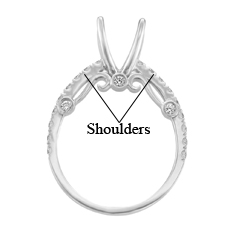
Shoulders refer to the top part of the shank, traditionally the area that comes closest to or meets the head. The most common ring style with the most variations and distinct, obvious shoulders is the cathedral style.

A cathedral style refers to any ring style with shoulders that lift away from the bridge before coming close to or meeting with the head(s) of the ring (regardless of the top style of the shank and design of the head). The cathedral style gets its name from its resemblance to flying buttresses on gothic cathedrals. Cathedrals are a popular style because they give the illusion of a lower center stone because the band looks like it is coming up to meet the center stone. It is also believed to be more secure because it deflects direct blows to the center stone.
5.Bridge (Also referred to as: the undercarriage or under-gallery)

The bridge refers to the part of the ring at the base of the gallery and head. Traditionally this is the area where a peg head is attached to the rest of the ring, however, most rings have a bridge regardless of the type of head. This is also referred to as the under-gallery because it is the area at the base of the gallery. The undercarriage is the area at the base of the bridge only visible when looking at the bottom of the ring.
6.Gallery
The gallery is the part of the ring at the top, side of the shank that is visible from a through-the-finger view of the ring. A gallery does not refer to the decoration or design featured in the gallery, but this portion of the ring. Some rings do feature designs and details, while others do not, this does not mean that the ring does not have a gallery.
7.Head (Also referred to as: prongs, setting)

The head is one of the most important parts of the ring: the part of your ring that holds your center stone. The head can be the determining factor for security and longevity of the center stone. Plus, the design and look of the head can completely make, or break the design of a ring. There are as many styles of head as there are people in the world. They do, however, tend to fall into certain design categories.
What is a peg head?
Most heads fall into two categories: peg heads or non-peg heads. Peg heads are heads that have a small metal peg at the base of the head, non-peg heads do not have this. The purpose of this peg is to attach the head to the mounting. The peg fits into a small hole drilled into the bridge of a ring, once in the hole, it is super-heated bonding the head to the mounting securely. Non-peg heads are secured by soldering the mounting to head by various other means determined by the type of mounting and the type of head.
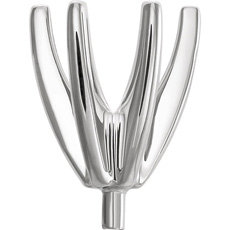
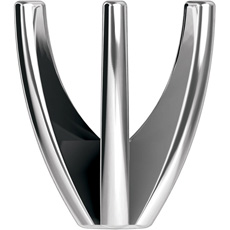
Peg Head No Peg
Both heads are considered secure if done correctly and allow versatility in the way they are interchangeable based on the shape and size of the center stone. This is a great way of adapting pre-made rings to fit center stones. However, custom pieces created at Wedding Bands & Co. are created to fit a chosen center stone and the prongs are designed, cast and built with the remainder of the ring.
Different head styles
Prong
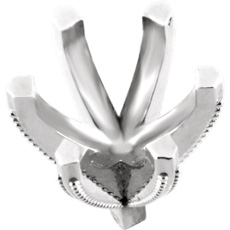
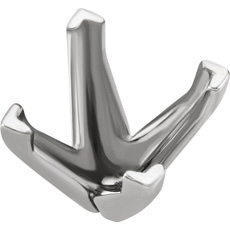
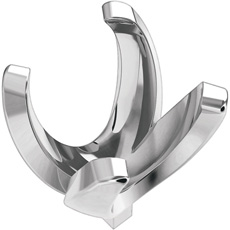
The name of this one is self-explanatory: the head has prongs. The style, size and number of prongs can vary, along with any design or decoration, therefore, prong settings are by far the most popular style used. Prong setting can even be used to describe some other designs for other types of heads.
Different Types of Prongs
V-Prong
V-prongs get their name from the v-shaped silhouette of the top of the prongs. These prongs are exclusively used on stones with sharp corners: princess, heart, pear, trillion and marquise.
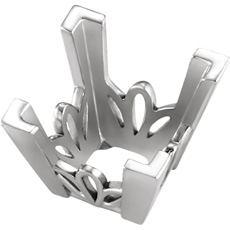
Split Prong
Split prong shares a similar appearance to a classic prong setting, however, the prongs split from each other to create multiple points of contact on the center stone.
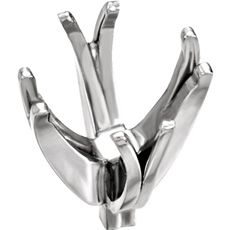
Claw Prong
Claw prong is a newer and very popular style. From the bottom and side views, it is identical to that of a classic prong setting. However, it gets its name from its resemblance of a claw at the top. The top of the prong tapers to a near point, giving the illusion of smaller, daintier prongs.
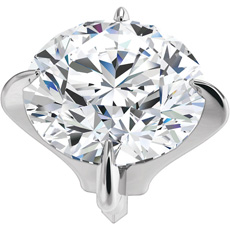
Classic Prong
As one could probably guess based on the name, a classic prong is the simplest and most frequently used style of prong. From the top the prong will be rounded or squared off (although some can be in decorative shapes like hearts), and can have any number of prongs based on the design and shape.
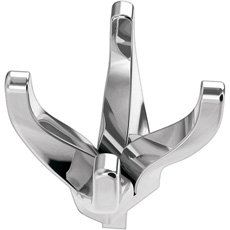
Many of these prong styles can be combined. For example, there are split claw prong styles. Or, you can combine classic prongs with v-prongs on shapes like pears and marquise.
Basket
This style gets its name from its resemblance to a basket from the side view. Baskets frequently do not have a peg at the bottom, allowing diamonds set in basket settings to be lower than in many other styles. The basket style is usually easily identifiable by the reflector bar (the bar that wraps around the midpoint of the head), although many styles instead feature filigree designs on the side in lieu of a reflector bar.
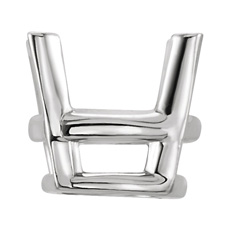
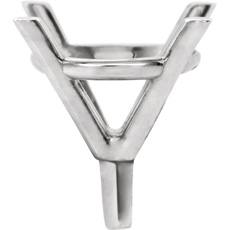

Bezel
Bezel is a very simple modern style that secures a center stone with a rim of metal that wraps entirely (or mostly) around the center stone. Bezels do tend to diminish the brilliance of a diamond slightly due to the limited light able to hit the diamond. However, with so much metal holding the stone in place, bezels are incredibly secure. Bezels are like baskets because they also infrequently have a peg and allow a diamond to be set lower.
Bar/Half-Bezel/Vice
Bar, vice and half-bezel settings are all similar design styles that feature 2 (or more) pieces of solid metal holding a stone in place. This is most closely related to the bezel design, however, as the name half-bezel suggests, the metal does not wrap entirely around the stone. The bar setting (also referred to as a vice) gets its name from the bars of metal holding the center stone securely in place.
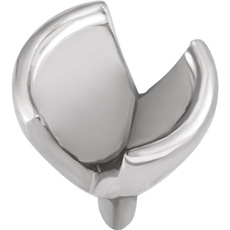
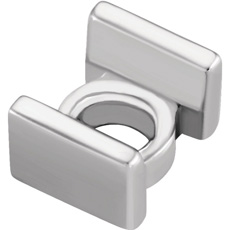
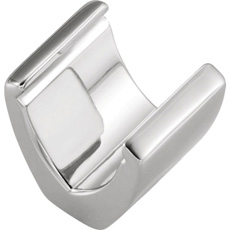
Halo
If you are unsure of what a halo design is, check out our earlier blog posts discussing the different styles, pros and cons of a halo design. The halo head is a head that can add a halo to a ring that did not have a halo as part of its design.
Cluster
Cluster styles are also described in the blog post about halo designs, because they are the most frequently compared. A cluster ring features a design comprised of a myriad of stones combined to give the appearance of a larger center stone. Clusters can take the shape of any stone and can combine different shapes and styles of stones to achieve its intended appearance.
Tulip
Tulip, quite obviously, gets its name from its resemblance to the flower. However, there are two different tulip styles, and many people don’t recognize the difference. One takes a literal approach to its floral motif with prongs that resemble the tulip flower petals. The other design features traditional prongs that bow sharply outward before going straight up to hold the center stone in place. This setting is great for allowing bands to sit closer to the ring because of the narrow base of the head.
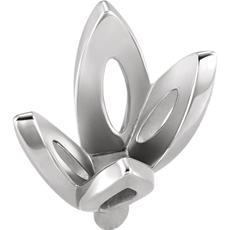
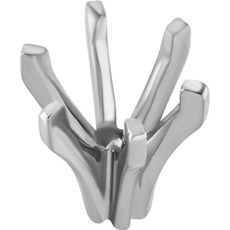
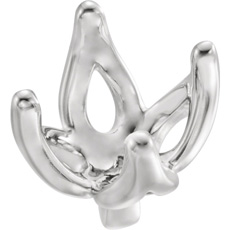
Illusion
The illusion head is a head that, like the cluster style, is used to give the illusion of a larger center diamond. However, it is done by using diamond cut metal to mimic the appearance of a sparkling diamond. Illusion plate rings were very popular in vintage rings but still find prevalence today for people looking for engagement rings on a budget.
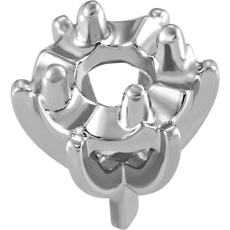
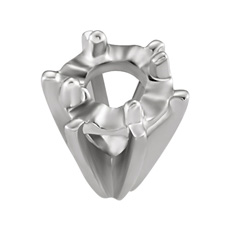
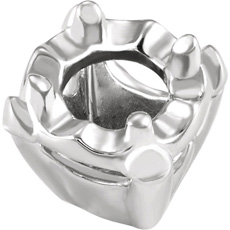
Diamond/Decorative
This is a broad, catchall category. This category is mostly just used to describe any mounting that does not fall in any of the above categories. However, while I am including diamond heads in here, that is not to say that all diamond heads do not fall into other categories. However, many decorative heads that do not fall into other categories feature diamonds, and many diamond heads are decorative and do not therefore fall into any of the above categories.
Like we discussed earlier with the prong styles, many of these styles can be combined or altered to make something altogether unique. There are diamond bezels, there are split-prong halos, there are diamond tulip styles. The only limit you have is your own imagination.
With so many designs and styles, how will I know what looks best on me/my partner?
This is a fair question; however, it is a question that is impossible to answer. Like choosing clothing, cars or shoes, it is best to try them on and see if you like the way they look. So, get out there and try on rings, see what style appeals most to you and what you think looks best on your finger.
Why should we come to you to design my ring?
We involve you in every step of the process. We will first sit down with you and go over any concerns you have and any specific design elements you want the ring to have. Once we have established exactly what you want the ring to look like, we will proceed with the design process. Once you see this design, if you want to make any changes, or if you have any questions or concerns we will be happy to address them for you. Our role is to help you create the perfect ring and that means we will listen to you and make sure that your ring is truly one of a kind.
We'll help you to design your dream engagement ring without stress and spending countless hours searching for your perfect ring. All you need to do is click on "Free Consultation" to get started.
By: Koorosh Daneshgar CEO/Design Chief
Email: Koorosh@WeddingBandscompany.com
Phone: 312-920-0726
Business Text Message Line:312-785-8333

